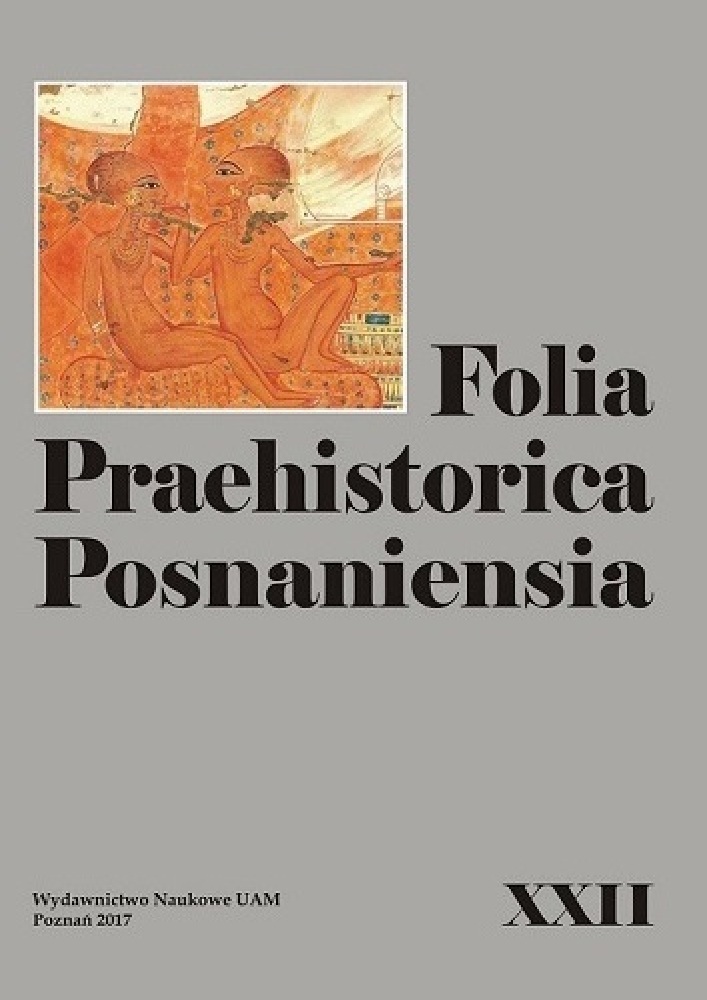Abstract
This article explains the characteristic style of princesses representations in Amarna Period art. This high essential aspect (in literally way) shows full of love relations between family members from Akhetaten. Children iconography in ancient Egypt remained rather persistent, however, pictures showing Meritaten, Maketaten, Ankhesenpaaten, Neferneferuaten, Neferneferure and Setepenre stand alone not only by details, but also by scenes in which princesses have been presented. The royal daughters are often shown naked or in robes looking like delicate tied with sash in waist or under bust dress belonging to their mother Nefertiti. Though girls – regardless of age – have always been portrayed with the sidelock of youth. The reliefs representing Amarna princesses and their parents deviate significantly from fixed and formal style of iconography which is characteristic for periods before and after Akhenaten’s reigns. The girls have been shown not only in family scenes enjoying a good time with their parents, but also accompanying the royal couple in scenes of tribute from Nubia and Syria, in the scenes of killing enemies of Egypt and in the heart-touching mourning scenes. The representations of the six daughters of Akhenaten and Nefertiti, besides being the symbol of the spouses’ fertility, also performed an important religious function – the girls together with their parents and the god Aten created the divine Ennead just like the model of the nine gods from Heliopolis. The reliefs showing Amarna family seem to present real feelings and emotions of the royal couple and their children, although it could have a propagandist character.
References
Aldred C. 1978 Jewels of the Pharaohs: Egyptian Jewelry of the Dynastic Period. Nowy York: Ballantine Books.
Allen J. P. 2009 The Amarna Succession. W: P. J. Brand, L. Cooper (red.), Cousing his name to live: Studies in Egyption epigraphy and history in memory of William J. Muarnane (s. 9–20). Linden/Bosfor: Brill.
Cooney J. D. 1965 Amarna Reliefs from Hermopolis in American Collections. New York: Brooklyn Museum.
Davies N. G. 1921 Mural Paintings in the city of Akhenaten. Journal of Egyptian Archaeology, 7, s. 1–7.
Davies N. G. 1903–1908 The Rock Tombs of Amarna (T. 1–6). London.
Davies N. G., Mapsero G., Newberry P. E. 1907 The Tomb of Iouiya and Touiyou. London.
Feucht E. 2001 Childhood. W: D. B. Redford (red.), The Oxford Encyclopedia of Ancient Egypt (T. 1, s. 261–264). Oxford – New York.
Gabolde M. 1993 La postérité d’Aménophis III. Égyptes, 1, marzec, s. 29–34. Avignon.
Gabolde M. 1998 D’Akhenaton à Toutânkhamon. Lyon – Paris (= Collection de l’Institut d’Archéologie et d’Histoire de l’Antiquité, Université Lumière Lyon 2, T. 3).
Gabolde M. 2002 La parenté de Toutânkhamon. Bulletin de la Société Française d’Egyptologie, 155, październik, s. 32–48.
Gabolde M. 2013 L’ADN de la famille royale amarnienne et les sources égyptiennes. Égypte nilotique et méditerranéenne, 6, s. 177–203.
Gardiner A. H. 1957 Egyptian Grammar. Being an Introduction to the Study of Hieroglyphs. Oxford: Griffith Institute, Ashmolean Museum.
Guillemette A. 2012 Życie codzienne. Egipt w czasach piramid. Warszawa: Świat Książki.
Hawass Z. i in. 2010 Ancestry and Pathology in Tutankhamun’s Family. Journal of American Medical Association, 303(7), s. 638–647.
Ikram S. 2003 Śmierć i pogrzeb w starożytnym Egipcie. Warszawa: Państwowy Instytut Wydawniczy.
Kemp B. J. 2013 The city of Akhenafen and Nefertiti: Amarna and its people. London: Thames & Hudson.
Lipińska J., Marciniak M. 1980 Mitologia starożytnego Egiptu. Warszawa: Wydawnictwo Artystyczne i Filmowe.
Martin G. T. 1974 The Royal Tomb at El-Amarna. The Reliefs. Inscriptions, and Architecture (T. 2). London: Egypt Exploration Society.
Petrie W. M. F. 1931 Seventy Years in Archaeology. London: S. Low, Marston & Co.
Reeves N. 2001 Akhenaten: Egypt’s False Prophet. London: Thames and Hudson.
Rachet G. 1995 Dziecko. W: Słownik cywilizacji egipskiej. Katowice, s. 92.
Redford D. B. 1987 Akhenaten – the heretic king. New Jersey: Princeton University Press.
Redford D. B., Smith R. W. 1976 The Akhenaten Temple Project, Initial Discoveries, T. 1: The Tomb of Kheruef. Warminster: Aris and Phillips.
Redford D. B., Smith R. W. 1980 Theban Tomb 192 by the epigraphic survey in cooperation with The Department of Antiquities of Egypt. Chicago: The Oriental Institute.
Tyldesley J. 2003 Nefertiti. Słoneczna królowa Egiptu. Warszawa: Państwowy Instytut Wydawniczy.
Van Dijk J. 2006 The Death of Meketaten. W: Causing His Name to Live: Studies in Egyptian Epigramartinphy and History in Memory of William J. Murnane (s. 83–88). Memphis.
